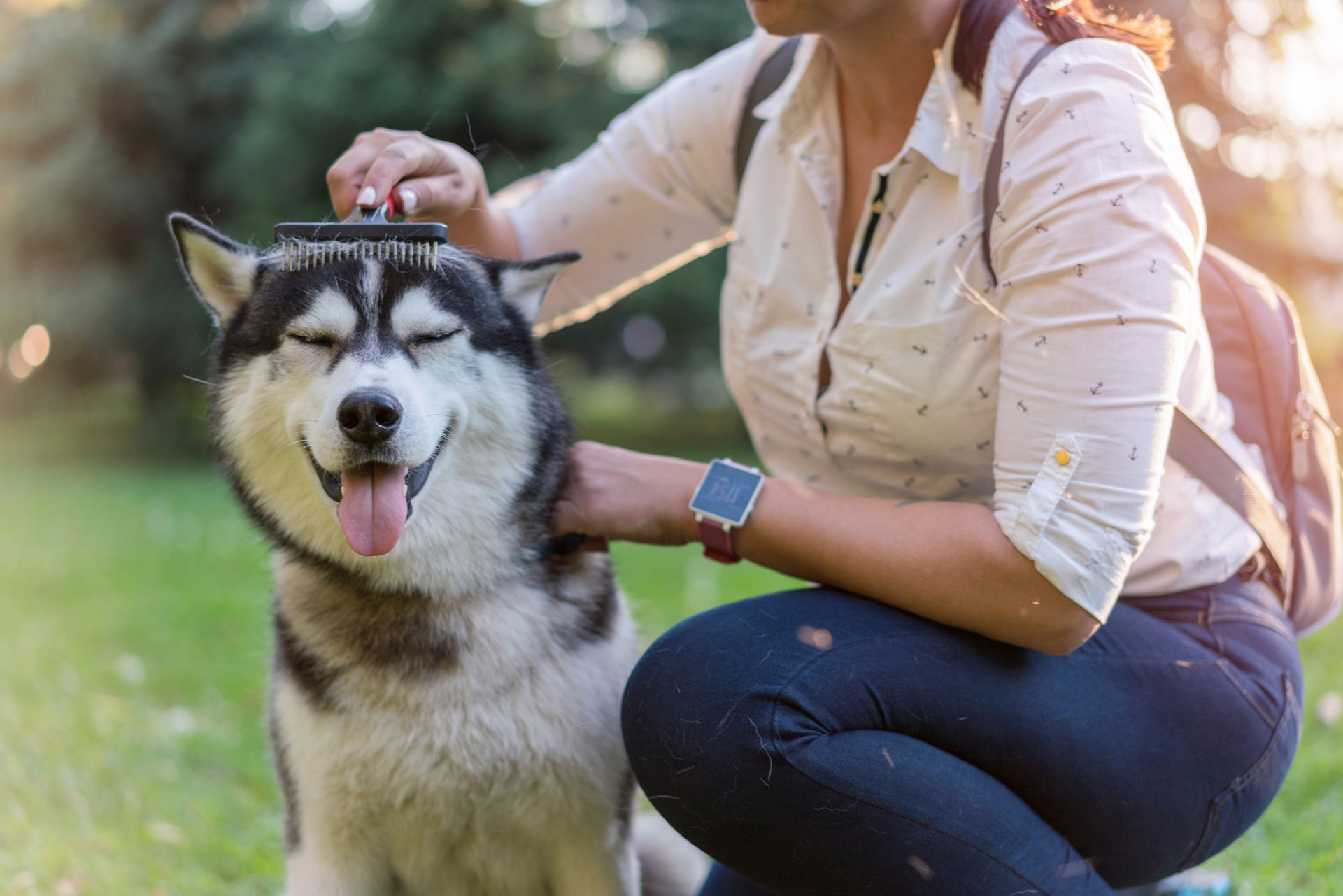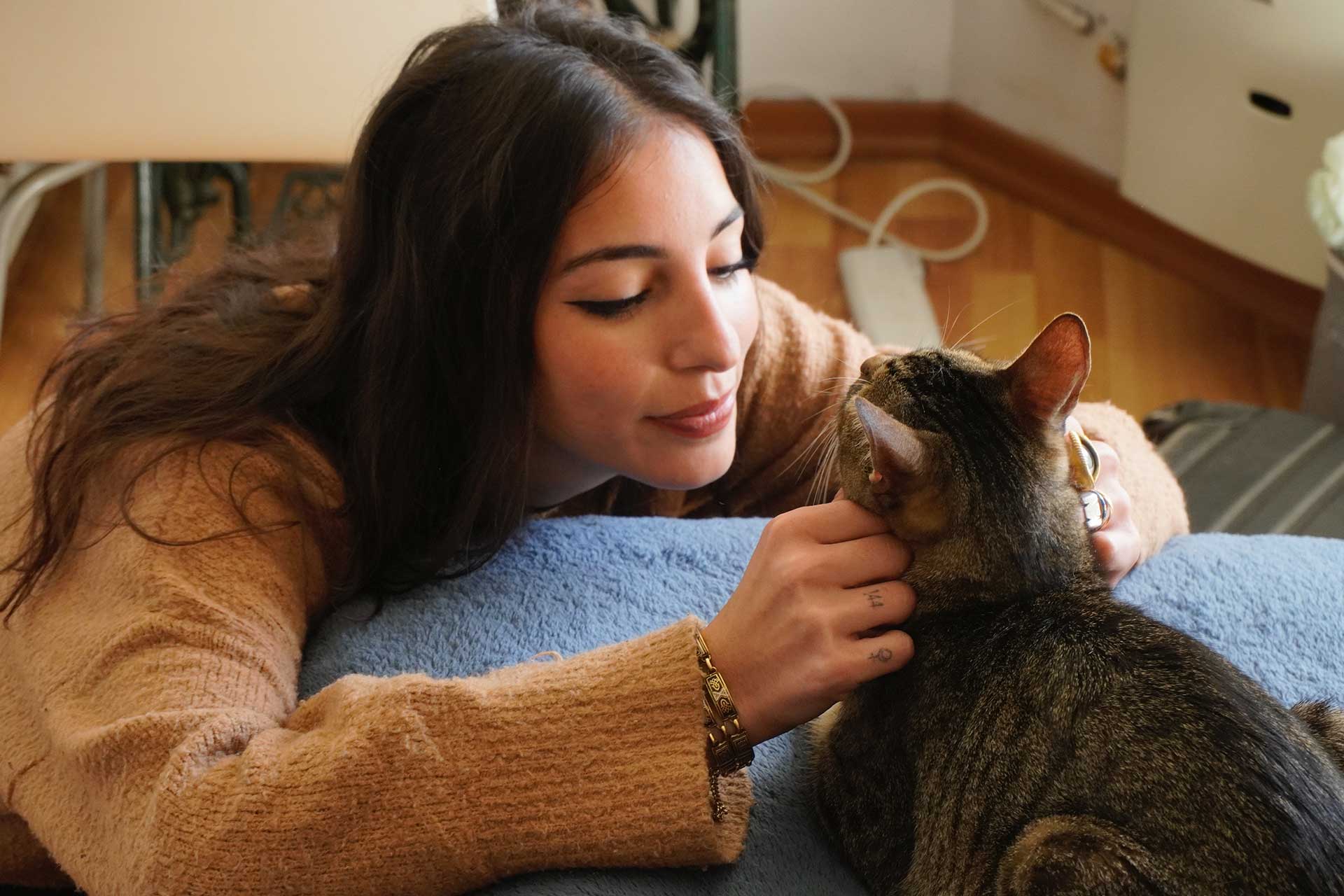Grooming your pet will help keep them looking and feeling their best. The key is to start early so they become familiar with the process and don’t make a fuss when they get older.
Regular grooming helps keep your pet’s coat tangle-free, reduces shedding, and provides an opportunity to give your pet a thorough once-over. During these sessions, you can be on the lookout for any lumps or bumps, skin irritations, or parasite infestations.
Here are some basic grooming skills to keep your furry friend in tip-top condition.
Brushing
Brushing removes dirt, debris and loose hair while spreading natural oils through your pet’s coat. The frequency of brushing depends on your dog’s coat type. Daily brushing is necessary for dog breeds with thick curly coats, such as Poodles, silky coats, such as Maltese and Shih Tzu, double coats, such as Border Collies and long coats, such as Afghan and Wheaten Terriers to prevent matting and reduce shedding. Short-haired dog breeds, on the other hand, need less frequent brushing. Always use an appropriate brush for your dog’s coat type, and don’t hesitate to seek advice from your vet.
Cats also benefit from regular brushing to prevent matting and hairballs, especially medium to long-haired breeds. Use a soft bristle brush or a grooming glove to comb their fur gently. Start with short sessions, gradually increasing the time as your cat gets used to it.
Washing
For dogs, the rule of thumb is a bath every four to six weeks, but this can vary based on their activity level and exposure to dirt. Dogs with skin issues may need more frequent baths with special soothing products recommended by your vet. Be careful not to overdo it, as frequent washing can dry out their skin and interfere with external worming and flea treatment. Use pet-friendly shampoo and conditioner and rinse thoroughly to prevent skin irritation.
While cats are excellent self-groomers, the occasional bath, especially for long-haired breeds, may be necessary. Be patient and gentle, as cats can be sensitive to water.
Nail trimming
Trimming overgrown nails is essential to prevent discomfort for your pet. A general rule of thumb is when your pet’s nails touch the ground while standing, it’s time for a trim.
Use pet nail clippers and be careful not to cut too close to the quick (the pink part you can see on a white nail), as it will bleed. If you’re uncomfortable doing this yourself, leave it to the professionals by booking an appointment with your pet groomer or vet. Consider a Best for Pet wellness plan, which includes four nail trims a year.
Vet tip: De-sensitising your pet to nail clipping at a young age is a great way to avoid problems as they age. Get into the habit of touching their paws when giving them affection and give them a treat and lots of praise when you cut their nails.
Ear and eye cleaning
Regularly check your pet’s ears for dirt or a wax build-up. Gently clean their ears with a damp cotton ball, but be careful not to let water drip into their ears to avoid infection.
Some pets prone to ear infections may benefit from an ear cleaning product recommended by your vet. Keep an eye out for eye discharge or tear staining, which can be cleaned with a damp cloth.
Teeth cleaning
Dental care plays a key role in preventing the build-up of plaque and tartar, which can lead to smelly breath, gum disease and tooth decay. Brushing your dog’s or cat’s teeth and incorporating dental chews into their daily routine can help. And once your pet becomes an adult, they’ll need an annual professional dental clean to remove plaque and tartar and check for cavities. Ask your vet if they offer the Best for Pet wellness plan to get a $250 discount on dental cleaning.
Bonding time
When grooming your pet, take your time to make it a relaxing and rewarding experience for them. Always use positive reinforcement with plenty of treats and praise. If you or your pet gets stressed, don’t hesitate to take a break. Grooming should be a special bonding time you both enjoy.






